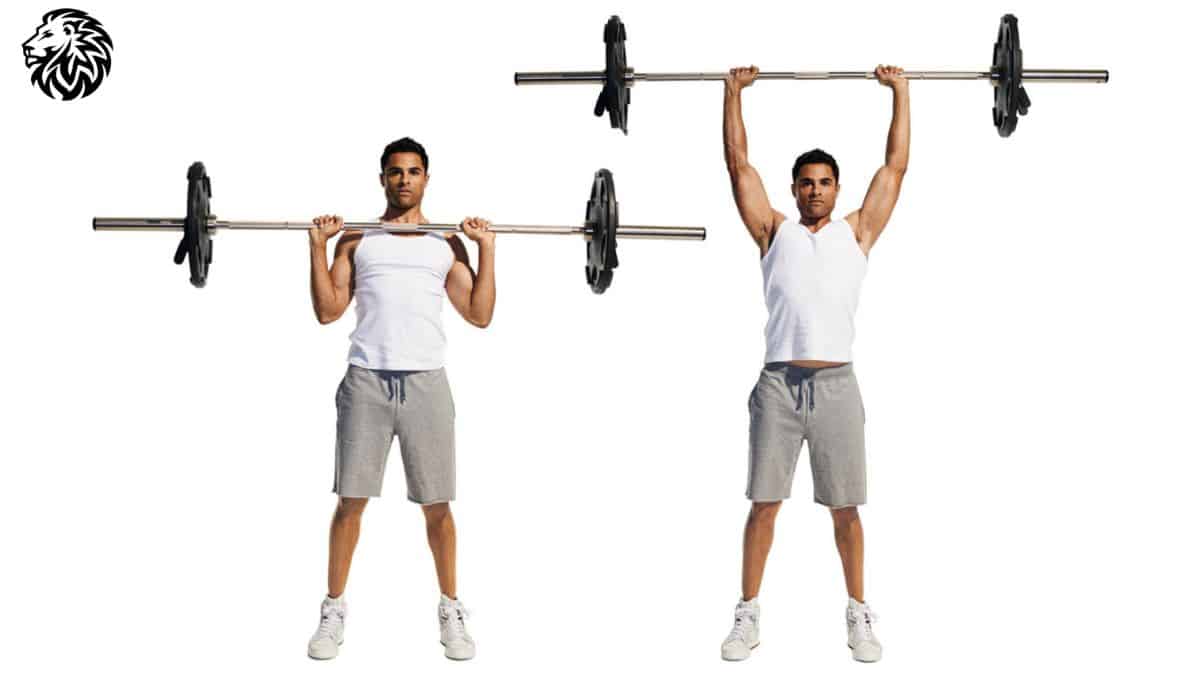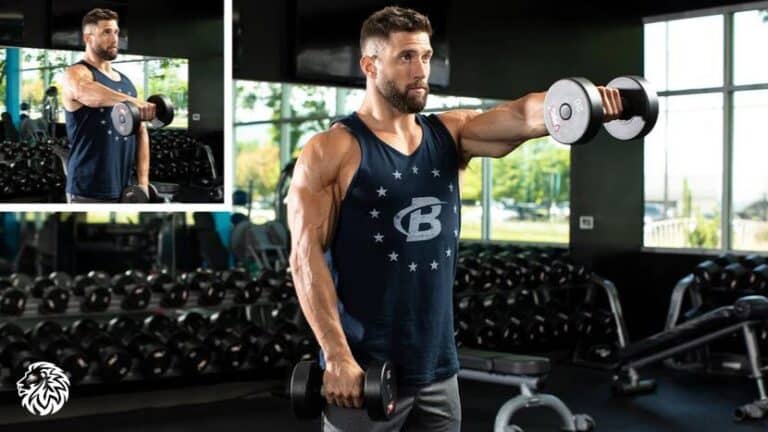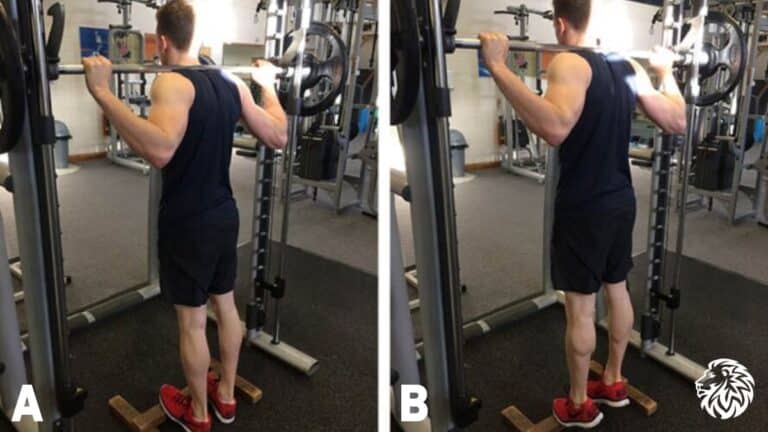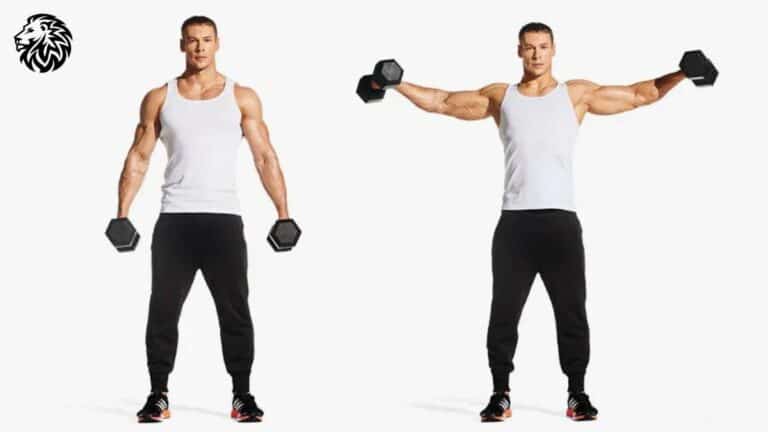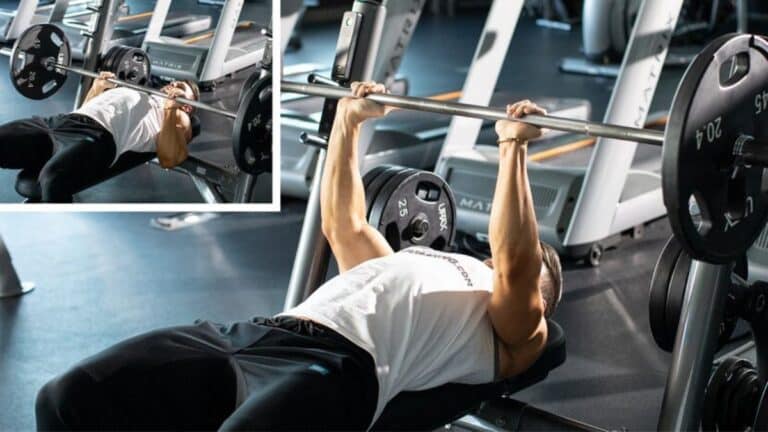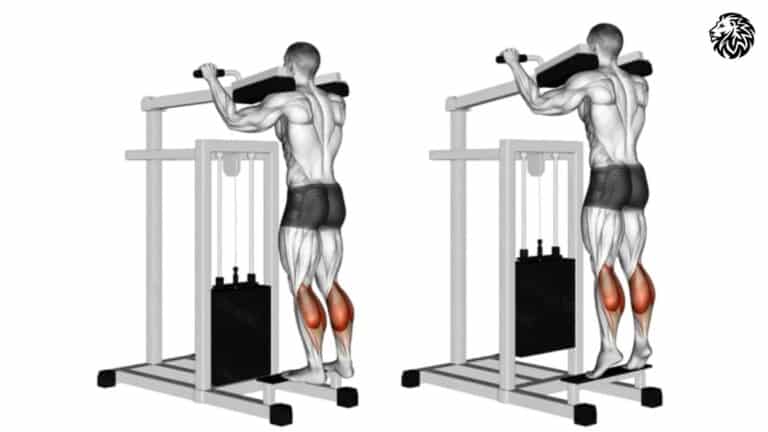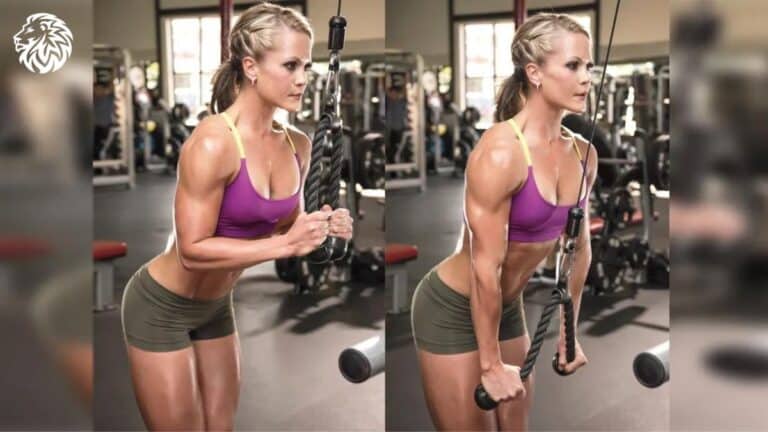The barbell overhead press is one of the best exercises for building upper body strength. It targets multiple muscle groups and improves overall shoulder stability. Whether you are new to weightlifting or looking to refine your technique, mastering this movement can enhance your workout routine. This guide covers everything you need to know to perform the barbell overhead press correctly, including proper form, benefits, common mistakes, and how to incorporate it into your training program.
Exercise Instructions: Barbell Overhead Press
Follow these steps to perform the barbell overhead press with proper technique:
- Setup: Stand with your feet shoulder-width apart and position a barbell at about chest height in a squat rack. Grip the bar slightly wider than shoulder-width with your palms facing forward.
- Unrack the Bar: Lift the bar off the rack and hold it at your upper chest with your elbows slightly in front of the bar. Engage your core and keep your chest up.
- Press the Bar Overhead: Push the bar straight up while keeping your wrists neutral and your head slightly back to allow a clear path for the bar.
- Lockout Position: Fully extend your arms overhead while keeping the bar directly above your shoulders and midfoot.
- Lower the Bar: Slowly bring the bar back down to your chest under control.
- Repeat: Perform the desired number of reps while maintaining proper form.
Muscles Targeted
The barbell overhead press works multiple upper body and core muscles, including:
- Shoulders (Deltoids): The primary muscle group engaged.
- Triceps: Assist in extending the arms at the top of the movement.
- Upper Chest (Clavicular Pectorals): Provides additional support.
- Traps and Upper Back: Help stabilize the bar throughout the movement.
- Core Muscles: Engage to maintain balance and prevent excessive arching.
Why This Exercise is Important
The barbell overhead press is essential for overall strength development. Here’s why you should include it in your routine:
- Builds Upper Body Strength: Strengthens the shoulders, triceps, and upper chest.
- Improves Shoulder Stability: Enhances mobility and reduces the risk of injuries.
- Boosts Athletic Performance: Helps with power-based sports such as football, basketball, and weightlifting.
- Enhances Posture: Strengthens muscles that support an upright posture.
- Carries Over to Other Lifts: Improves pressing strength for movements like bench presses and push presses.
Tips and Things to Avoid
To get the most out of your barbell overhead press, follow these tips and avoid common mistakes:
Tips:
- Keep your core tight throughout the lift to maintain stability.
- Use a controlled motion, avoiding excessive bouncing or jerking.
- Keep your wrists straight and aligned with your forearms.
- Engage your glutes and legs for a stronger foundation.
Common Mistakes to Avoid:
- Overarching the lower back: Can lead to injury; keep your core braced.
- Using too much weight: Start light and focus on form before increasing load.
- Leaning too far backward: Maintain a neutral spine position.
- Locking out elbows too aggressively: Avoid hyperextension at the top.
Reps and Sets
| Experience Level | Sets | Reps | Rest Between Sets |
|---|---|---|---|
| Beginner | 3 | 8-12 | 60-90 seconds |
| Intermediate | 4 | 6-10 | 90-120 seconds |
| Advanced | 5 | 4-8 | 120-180 seconds |
Other Exercises to Use
Incorporate these exercises to complement your barbell overhead press and develop stronger shoulders:
- Dumbbell Shoulder Press: Enhances muscle balance and stability.
- Push Press: Uses leg drive to press heavier weights.
- Arnold Press: Engages all three heads of the deltoid.
- Lateral Raises: Focuses on the side delts for width.
- Face Pulls: Strengthens rear delts and improves shoulder health.
Final Thoughts: Barbell Overhead Press
The barbell overhead press is a foundational exercise for building strength and stability. Proper form and progression are key to maximizing benefits and avoiding injury. Whether you’re an athlete or a casual gym-goer, this exercise will improve your upper body strength and posture. Make sure to combine it with complementary movements for a well-rounded routine.
Frequently Asked Questions about Barbell Overhead Press
Is the barbell overhead press good for beginners?
Yes, but beginners should start with light weight and focus on form before increasing resistance.
How often should I do the barbell overhead press?
Include it in your workout 1-2 times per week, depending on your training program.
Can I use dumbbells instead of a barbell?
Yes, dumbbells provide more range of motion and help correct muscle imbalances.
Why does my lower back hurt during the press?
This is likely due to excessive arching. Engage your core and keep a neutral spine to prevent discomfort.
Should I do overhead press seated or standing?
Standing engages more stabilizing muscles, while seated eliminates leg drive and isolates the shoulders more.
